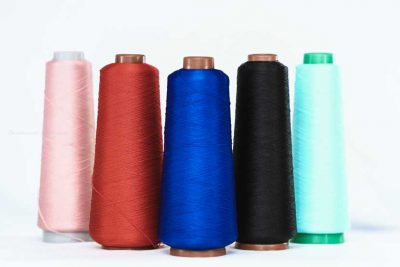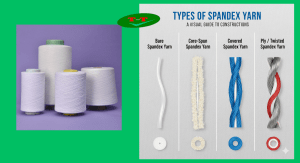The world is awash in textiles, each fiber playing a unique role in the vast tapestry of global trade for smoking thread export. Among these fibers, a lesser-known but undeniably vital player exists: smoking thread. This seemingly unassuming thread, often overlooked in favor of its flashier counterparts, holds a crucial place in the world of textiles, particularly in the realm of embroidery, garment construction, and even industrial applications. This article takes a deep dive into the intricate world of smoking thread export, exploring its historical significance, global production landscape, key players, emerging trends, and the challenges and opportunities that lie ahead.
A History of Thread: From Ancient Crafts to Global Trade

The art of spinning and weaving dates back millennia, with evidence of thread production found in ancient civilizations across the globe. Early threads were made from natural materials like flax, cotton, and wool, spun by hand and woven into cloth for clothing, shelter, and other essential items. Over time, innovation led to the development of techniques like dyeing and embroidery, which enhanced the aesthetic and functional value of woven fabrics.
The Origins of Smoking Thread Export
Smoking thread, specifically, emerged from the need for a durable and versatile thread for decorative embroidery and garment construction. Its characteristic sheen and strength stemmed from the unique process of smoking the thread, which involved exposing it to smoke from burning materials like pinewood or beeswax. This process not only added a distinctive luster but also strengthened the thread’s fibers, making it perfect for intricate embroidery and demanding sewing tasks.
The Rise of Globalization and Industrialization
The rise of globalization in the 19th century brought significant changes to the textile industry. Industrialization revolutionized production methods, leading to the mass production of a wide array of textiles including smoking thread. The development of synthetic fibers like rayon and nylon further expanded the options available to manufacturers and consumers alike.
Global Production Landscape: A Multifaceted Network
Today, the smoking thread export industry is a global network of producers, traders, and consumers interconnected by a complex web of trade routes and manufacturing hubs.
Asia: The Epicenter of Smoking Thread Production
Countries like China, India, Pakistan, and Vietnam are major producers of smoking thread, leveraging their low labor costs and established manufacturing infrastructure to cater to global demand. These nations have become hubs for smoking thread production, with factories churning out vast quantities of the thread for export to international markets.
Europe: Preserving the Tradition of Quality
Traditionally renowned for high-quality craftsmanship, European countries like Switzerland, Germany, and Italy still maintain a significant presence in the production of premium and specialized smoking threads. These nations have built a reputation for excellence, attracting discerning consumers who value the artisanal nature and superior quality of their smoking thread offerings.
North America and South America: Consumers and Emerging Producers
The United States and Canada, while not major exporters, are significant consumers of smoking thread, primarily for domestic use in their robust textile and apparel industries. Meanwhile, Brazil and Argentina have emerged as growing players in the smoking thread industry, capitalizing on their access to natural resources and potential for large-scale production.
Types of Smoking Thread: A Multitude of Options
The smoking process, which forms the core of this unique thread, is essentially a dyeing technique that intensifies the thread’s color and imparts a characteristic sheen. Different methods and materials employed in the smoking process result in a wide range of smoking threads, each with distinct properties and applications.
Cotton Smoking Thread
The most common type, cotton smoking thread combines durability and affordability. It’s widely used in garment construction, embroidery, and quilting, making it a versatile choice for a wide range of textile applications.
Polyester Smoking Thread
Known for its strength and resistance to shrinkage and fading, polyester smoking thread is ideal for industrial textiles, upholstery, and outdoor applications where durability and weather-resistance are paramount.
Rayon Smoking Thread
Rayon’s silky texture and vibrant colors make it popular for high-end fashion and home décor items, where the thread’s luxurious feel and aesthetic appeal are highly valued.
Silk Smoking Thread
Luxurious and delicate, silk smoking thread finds its niche in embroidery, weaving, and embellishments for high-fashion garments, where its exquisite sheen and refined elegance are celebrated.
Metallized Smoking Thread
Adding a touch of sparkle, metallized smoking thread is used in creating decorative and eye-catching embellishments, elevating the visual appeal of various textile products.
Key Applications: From Embroidery to Industrial Uses
Smoking thread’s versatility and unique appearance have earned it a coveted place in various industries, each leveraging its distinct properties to serve specific needs.
Embroidery: The Foundation of Artistic Needlework
The foundation of artistic needlework, smoking thread is a staple in creating intricate patterns, designs, and embellishments on everything from clothing and accessories to home décor and art pieces. Its sheen and strength make it the perfect medium for skilled embroiderers to bring their visions to life.
Garment Construction: Strengthening the Seams
Its strength and durability make smoking thread a reliable choice for garment seams and hems, providing both aesthetic appeal and structural integrity. Clothing manufacturers rely on smoking thread to ensure their products maintain their shape and quality over time.
Industrial Textiles: Heavy-Duty Applications
Heavy-duty smoking thread finds applications in industrial textiles used in furniture, automotive upholstery, and other durable goods that require strength and resistance. Its ability to withstand wear and tear makes it an indispensable component in these specialized textile products.
Cords and Threads: Decorative Embellishments
Beyond embroidery and garment construction, smoking thread is also used in the production of cords, tassels, and other decorative elements, adding a touch of elegance and sophistication to various products. These unique applications showcase the versatility of smoking thread as a textile material.
Challenges and Opportunities
Despite its rich history and diverse applications, the smoking thread export industry faces challenges and opportunities that will shape its future.
Challenges: Competition from Synthetic Threads
The rise of synthetic threads like polyester and nylon, known for their durability, affordability, and ease of production, presents stiff competition to smoking thread. Manufacturers must find ways to differentiate their products and highlight the unique benefits of smoking thread to maintain their market share.
Changing Consumer Preferences
In an era of fast fashion and disposable textiles, the traditional craftsmanship and artistry associated with smoking thread might struggle to attract younger consumers. Adapting to these changing preferences and finding ways to appeal to a broader demographic will be crucial for the industry’s success.
Global Economic Fluctuations
Fluctuations in global demand, exchange rates, and trade policies can significantly impact the export of smoking thread and create uncertainty for producers and traders. Navigating these economic challenges and developing strategies to mitigate risks will be essential for the industry’s resilience.
Environmental Sustainability Concerns
The traditional smoking process often involves the use of chemicals and processes that raise environmental concerns. Addressing these concerns through sustainable and eco-friendly practices is a key challenge for the industry, as consumers become increasingly aware of the environmental impact of textile production.
Opportunities: Embracing the Future
Despite the challenges, the smoking thread export industry also faces several exciting opportunities that could drive its growth and evolution.
Growing Demand for Handcrafted Goods
The increasing appreciation for handcrafted and artisanal products worldwide presents an opportunity for smoking thread producers to highlight the unique craftsmanship and aesthetic value of this thread. By emphasizing the artisanal nature of their products, manufacturers can appeal to a growing segment of consumers seeking authentic and high-quality textiles.
Focus on Sustainability and Ethical Practices
Recognizing the growing importance of sustainability, producers can capitalize on the opportunity to showcase environmentally friendly smoking thread production methods. By adopting sustainable practices and promoting their eco-conscious approach, they can attract ethically-minded consumers and differentiate themselves in the market.
Emerging Markets: Untapped Potential
The rise of emerging economies like India, China, and Brazil presents vast untapped potential for the smoking thread industry, as these countries experience increasing demand for high-quality textiles. Exploring and cultivating these new markets can open up significant growth opportunities for producers and exporters.
Technological Advancements: Innovations in Smoking Thread
Innovation in dyeing and finishing technologies can lead to the development of new and improved smoking threads, opening up new markets and applications. Embracing these technological advancements can allow the industry to stay ahead of the curve and meet the evolving needs of the global textile landscape.
Conclusion
As the global textile landscape evolves, the future of smoking thread hinges on its ability to adapt to changing trends, cater to evolving consumer preferences, and embrace sustainable practices. By positioning itself as a thread that embodies both tradition and innovation, smoking thread can continue to play a significant role in the global textile industry. Through collaborative efforts, strategic investments, and a commitment to sustainability, the smoking thread export industry can ensure its continued relevance and growth in the years to come.



